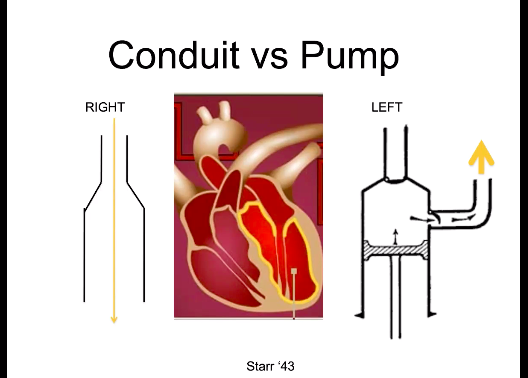Join me in welcoming Kenichi Tanaka, M.D., MSc., Professor of Anesthesiology and Division Chief Cardiothoracic Anesthesiology at the University of Maryland Medical Center. Dr. Tanaka started his Anesthesia training at Pittsburgh, then specialized in Cardiothoracic Anesthesia at Emory where he also earned a Masters in the Science of Clinical Research. Since joining UMMC in 2014 Dr. Tanaka has raised the bar in regards to academic research by publishing > 100 peer-reviewed journals and serving on the editorial boards of British Journal of Anaesthesia (Associate Editor), Anesthesia & Analgesia (Senior Editor), and Journal of Cardiothoracic Vascular Anesthesia. Today Dr. Tanaka sacrifices time from his busy schedule to delve into the dynamics of Thromboelastometry. I can assure you, if you ever plan to remedy coagulopathy in the ICU you will be glad you took 40 minutes to listen to this lecture!
Clinical Pearls (assisted by Dr. Mustafa Abdulmahdi)
- Traditional approach:
- Coagulopathy = low platelet count & prolonged PT/aPTT after cardiopulmonary bypass ⇒ platelet & FFP transfusion
- Whole Blood Viscoelastic Tests
- Clot onset in whole blood (CT) ⇒ clot strength (maximum amplitude [MA]) ⇒ clot stability (i.e., degree of systemic fibrinolysis; maximum lysis time)
- Clot stability example:
- Control (Stable clot)
Bolliger D, Tanaka KA, et al. Br J Anaesth 2009; 102:793-9
-
- Hemodilution
Bolliger D, Tanaka KA, et al. Br J Anaesth 2009; 102:793-9
-
-
-
- Antifibrinolysis can be used here
-
-
- Key differences between ROTEM & TEG systems:
- ROTEM
- Uses EXTEM (Platelet-specific) & FIBTEM (fibrinogen-specific) assays that are activated by extrinsic pathway tissue factor
- EXTEM-CT (clotting time): similar to TEG in that it’s the duration for onset of clot formation
- Heparin neutralized by polybrene so, unlike TEG, NO NEED to specify need to neutralize heparin
- Shorter turnaround time (important in targeted transfusion)
- Uses EXTEM (Platelet-specific) & FIBTEM (fibrinogen-specific) assays that are activated by extrinsic pathway tissue factor
- TEG
- Always has intrinsic activation (Kaolin), even in rapid TEG, which is partially dependent on TF extrinsic pathway; also has intrinsic activation, unlike ROTEM that only has TF
- TEG assays don’t contain heparinase type reagent so MUST specify need to neutralize heparin
- ROTEM
- ROTEM & TEG can complement one another, when in doubt.
- Conventional TEG teaching ⇒ if there’s a low α angle, give fibrinogen or platelets
- ROTEM FIBTEM system can differentiate between the two conditions to guide transfusion
- 10-40-80 rule ⇒ you don’t have to remember PT & PTT or platelet thresholds at 2 in the morning!
- If FIBTEM A10 <10 mm ⇒ think cryo
- If EXTEM A10 <40mm & FIBTEM normal ⇒ think platelets
- If EXTEM-CT >80s ⇒ think FFP or PCC
- ROTEM-based approach during cardiac surgery
- Baseline FIBTEM is reference point
- Hemodilution assessed by changes in FIBTEM A10 and/or EXTEM-CT
- Coagulation trajectory corrected by concentrated plasma on CPB (hemoconcentration) ⇒ this can maintain antithrombin in plasma & avoid DIC
- Baseline FIBTEM is reference point
- Warfarin and TEG/ROTEM
- INR vs. EXTEM or Kao TEG ⇒ compared to TEG, EXTEM (ROTEM) system correlated better with INR values & provides faster results
- TF (extrinsic ROTEM activation pathway) vs. contact trigger (TEG-activation system)
- Contact-activated tests are less sensitive to low vitamin K factors & hemodilution
- During stress states, we release Factor VIII (+vWF), which is a contact system factor and makes the contact tests less sensitive
- Contact-activated tests are less sensitive to low vitamin K factors & hemodilution
- ROTEM weaknesses:
- Does not reflect platelet function (vWF, P2Y12, TXA2)
- Data not robust for DOACs (↑EXTEM-CT)
- Not sensitive to thombophilia: FV Leiden, Deficient protein C/S, ATIII
- Impact of hct changes; low hct ⇒ larger amplitude
Suggested Reading
- Williams B, McNeil J, Crabbe A, Tanaka KA. Practical Use of Thromboelastometry in the Management of Perioperative Coagulopathy and Bleeding. Transfus Med Rev. 2017 Jan;31(1):11-25. [Pubmed Link]
- Shen L, Tabaie S, Ivascu N. Viscoelastic testing inside and beyond the operating room. J Thorac Dis. 2017 Apr;9(Suppl 4):S299-S308. [Pubmed Link]
- Wikkelsø A, Wetterslev J, Møller AM, Afshari A. Thromboelastography (TEG) or rotational thromboelastometry (ROTEM) to monitor haemostatic treatment in bleeding patients: a systematic review with meta-analysis and trial sequential analysis. Anaesthesia. 2017 Apr;72(4):519-531. [Pubmed Link]






